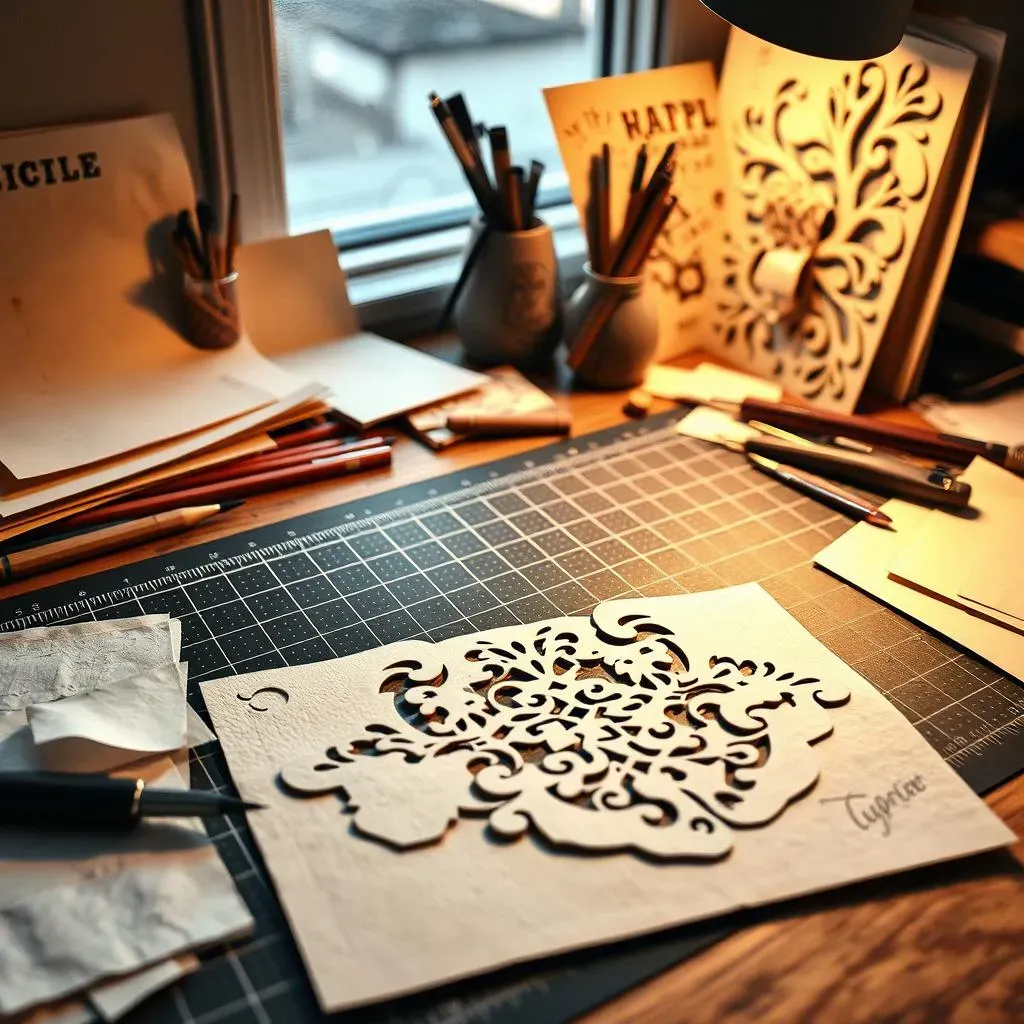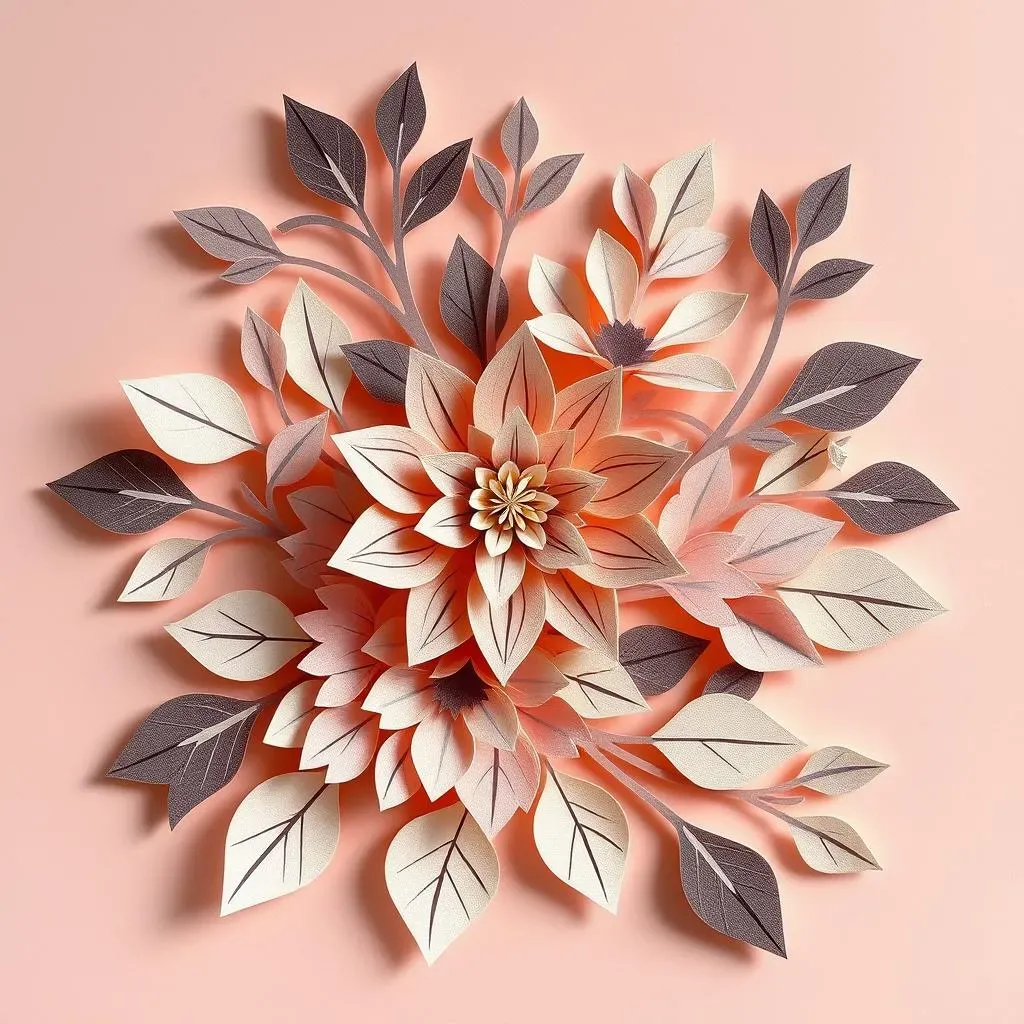Table of Contents
Ever wondered what paper is used for paper cutting? Choosing the right paper is crucial for creating beautiful and intricate designs. This article is your guide to selecting the perfect paper for your next paper-cutting project. We'll explore various paper types, focusing on weight, texture, and how these properties affect your cutting experience. From the smooth surface of cardstock to the delicate feel of rice paper, we'll cover a wide range of options, helping you discover the best fit for your artistic vision. We'll also touch on advanced techniques and how your paper choice can influence the final look of your artwork. Whether you're a seasoned paper artist or just starting, get ready to learn about the fascinating world of paper and its impact on your paper-cutting journey. So, let's dive in and uncover the secrets to achieving stunning results with the perfect paper for your needs! Get ready to master the question: "what paper is used for paper cutting?" and transform your paper-cutting projects.
Choosing the Right Paper: Weight and Texture
Choosing the Right Paper: Weight and Texture
So, you're diving into the world of paper cutting! Fantastic choice. One of the first things you'll discover is how much the paper itself impacts your final piece. Think of it like this: choosing the right paper is like choosing the right paint for a painting – the wrong one and your masterpiece might crumble before it's even finished. We're talking about weight (measured in gsm – grams per square meter) and texture. Heavier paper (like 200gsm or higher) is sturdier; it holds its shape better and is less likely to tear during intricate cuts. Lighter weight paper (around 120gsm) is easier to cut but might need extra care to prevent tearing, especially with detailed designs. Check out this guide on paper cutting tools to make sure you have the right tools for your chosen paper.
Paper Weight (gsm) | Texture | Suitable for |
|---|---|---|
120-160 | Smooth, delicate | Simple designs, delicate artwork |
160-200 | Smooth, medium weight | More complex designs, layering |
200+ | Thick, sturdy | Intricate designs, large-scale projects |
Texture is equally important. A smooth paper will give you clean, crisp lines, perfect for precise detail work. Think about a smooth cardstock. However, a textured paper, like handmade paper or something with a subtle linen finish, can add a unique visual element to your design. It can create interesting shadows and depth. The texture can also affect how easily your blade glides through the paper; some textures might require a bit more pressure or a sharper blade. If you're struggling with tearing, consider using a paper cutter for consistent cuts.
"The right paper is half the battle won." - Anonymous Paper Cutter (Probably)
Experimentation is key! Don't be afraid to try different types of paper to find what you like best. You might discover that a particular paper weight or texture lends itself to a specific style or technique. Start with smaller projects to get a feel for different weights and textures before tackling more complex designs. If you're still unsure, check out our guide on how to do paper cutting for more tips!
- Cardstock
- Construction paper
- Specialty paper (e.g., rice paper, vellum)
Paper Types for Paper Cutting: Exploring Your Options
Paper Types for Paper Cutting: Exploring Your Options
Now, let's talk about the *types* of paper you can use. It's not just about weight and texture; different papers offer unique properties that can dramatically change your final piece. Think of it like choosing the right instrument for a song – a delicate flute for a soft melody, a powerful tuba for a bold statement. Cardstock is a classic choice, offering a good balance of weight and smooth surface, perfect for intricate details. It comes in various colors and finishes, allowing for creative expression. For a really detailed design, you might consider using a paper cutting template to help you with the cutting.
- Cardstock: A reliable workhorse, great for detail.
- Construction Paper: Thicker than printer paper, good for beginners.
- Specialty Papers: Rice paper, vellum, or even fabric-based papers add unique textures and effects.
Construction paper is a fantastic option for beginners, offering a good balance of affordability and ease of use. Its thicker nature makes it less prone to tearing, allowing you to focus on mastering your cutting techniques. However, it may not be ideal for highly intricate designs due to its slightly less smooth surface. If you're planning on layering, remember that thicker paper is better for the bottom layer to provide good support. Want to try something different? See our guide on making Ganesha with paper cutting for inspiration!
Paper Type | Pros | Cons | Best For |
|---|---|---|---|
Cardstock | Durable, smooth surface | Can be expensive | Intricate designs, clean lines |
Construction Paper | Affordable, easy to cut | Less durable, not ideal for fine detail | Beginners, simple projects |
Specialty Paper | Unique textures, effects | Can be difficult to work with | Adding visual interest, experimentation |
"Experimentation is the mother of invention." - Someone Wise (Probably)
Don't be afraid to experiment! Specialty papers like rice paper, vellum, or even fabric-based papers can add unique textures and effects to your work. Rice paper, for example, is incredibly delicate and translucent, making it perfect for creating ethereal, layered designs. Vellum offers a slightly more durable alternative with a beautiful, slightly translucent quality. If you're looking for something totally different, consider making your own paper! Check out our post on is cutting paper a chemical change to learn more about the science behind paper cutting.
- Experiment with different paper types to find your favorites.
- Consider the final look you want to achieve when choosing your paper.
- Don't be afraid to combine different types of paper in one project.
Advanced Techniques and Paper Selection
Advanced Techniques and Paper Selection
Layering and Combining Papers
Once you've mastered the basics, layering different papers opens a whole new world of creative possibilities! Think of it as adding depth and dimension to your artwork. Imagine a delicate floral design, where you use a lighter weight paper for the petals and a heavier paper for the stems. The contrast in weight and texture adds visual interest and complexity. You can also play with colors and textures to create stunning effects. For example, you could layer a textured paper beneath a smooth one to create an interesting shadow effect. Using different paper weights also helps create depth in a design. If you're struggling with tearing, remember to use a sharp blade and a self-healing cutting mat. For more help on this, check out our guide on choosing the right tools.
Experiment with different combinations to find what works best for you. Don't be afraid to experiment with different types of paper or even combine different techniques. There are no rules when it comes to paper cutting – the only limit is your imagination! Need some inspiration? Check out our ideas for amazing paper cutting decorations!
- Experiment with different color combinations.
- Try layering different textures.
- Use different weights of paper to add depth.
Working with Delicate Papers
Delicate papers like rice paper or vellum add a unique ethereal quality to your paper-cutting projects. However, they require a bit more finesse. Think of it like working with silk – you need a light touch and sharp tools. A super sharp blade is essential to prevent tearing. Use a self-healing cutting mat to protect your work surface and to ensure a smooth cutting surface. A consistent, light pressure is key; avoid pushing too hard, as this can easily tear the paper. Consider using a paper cutter for straight lines and clean cuts.
Practice makes perfect! Start with simpler designs to get a feel for how the paper reacts to your blade. Once you get comfortable, you can move on to more complex projects. Remember, even small mistakes can be incorporated into your design – often adding a unique charm! Need help with some techniques? Check out our guide on how to do paper cutting for more guidance.
Paper Type | Cutting Tips | Best For |
|---|---|---|
Rice Paper | Use a very sharp blade, light pressure. | Delicate, layered designs |
Vellum | Slightly more durable than rice paper, still requires a light touch. | Subtle texture, translucent effects |
Embossing and Other Techniques
Want to take your paper cutting to the next level? Explore embossing! Embossing adds texture and depth to your designs, creating a three-dimensional effect. It involves pressing a design into the paper to create a raised or indented pattern. This can be done before or after cutting, depending on your design. It's a great way to add visual interest and complexity to your work. Want to learn more about adding depth to your designs? Learn about different types of paper cutting.
Other advanced techniques include using multiple layers of colored paper, creating shadows and depth, and experimenting with different cutting tools. Think outside the box! Don't be afraid to experiment with different techniques and tools to find what works best for you. Your creativity is the only limit! Remember, even mistakes can add character to your piece. Want to learn more about the tools you can use? Check out our guide on how cutting paper can affect your tools!